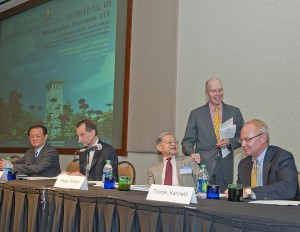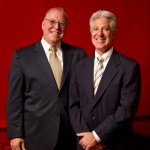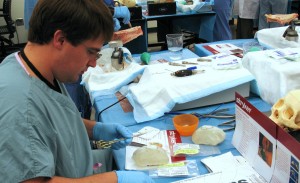It’s a new year and shedding pounds is at the top of the resolution list for many Americans. To help dieters lose weight and jump start healthier eating habits, Emory Heart & Vascular Center cardiologist Laurence Sperling, MD served on a U.S. News & World Report panel evaluating some of the country’s most popular diets.
The rankings, released today, include U.S. News’ second annual list of Best Diets, featuring its first-ever ranking of Easiest Diets to Follow. It includes six other rankings first assessed and published in 2011: Best Diets Overall, Best Commercial Diet Plans, Best Weight-Loss Diets, Best Diets for Healthy Eating, Best Diabetes Diets, and Best Heart-Healthy Diets.
According to U.S. News, dieters who choose a diet at or near the top of the new Easiest Diets to Follow list are more likely to succeed in staying on their diet for the long haul. Weight Watchers took the top spot on that list, followed by Jenny Craig, the Mediterranean Diet, Slim-Fast and Volumetrics.
The five new diets added for 2012 are the Abs Diet, Biggest Loser Diet, Dukan Diet, Flat Belly Diet, and Macrobiotic Diet.
Big winners across the rankings included:
- DASH Diet: ranked #1 in Best Diets Overall, Best Diets for Healthy Eating, and Best Diabetes Diets (tie)
- Weight Watchers: ranked #1 in Best Weight-Loss Diets, Best Commercial Diet Plans, and Easiest Diets to Follow
- Biggest Loser Diet: ranked #1 in Best Diabetes Diets (tie)
- Ornish Diet: ranked #1 in Best Heart-Healthy Diets
To create the rankings, U.S. News turned to Sperling and the same 22 experts for Best Diets 2012 as it did for Best Diets 2011. The panel, which included nutritionists, dietitians, cardiologists and diabetologists, reviewed 25 popular diet profiles that were developed by reporters and editors at U.S. News.
“I can’t say enough about their commitment and hard work,†said Avery Comarow, U.S. News Health Rankings Editor. “They enabled us to provide meaningful, evidence-based rankings.â€
Sperling is a professor of medicine at Emory University School of Medicine and director of Emory’s Center for Heart Disease Prevention.
For a complete list of the new diet rankings, please visit:
http://health.usnews.com/best-diet



















